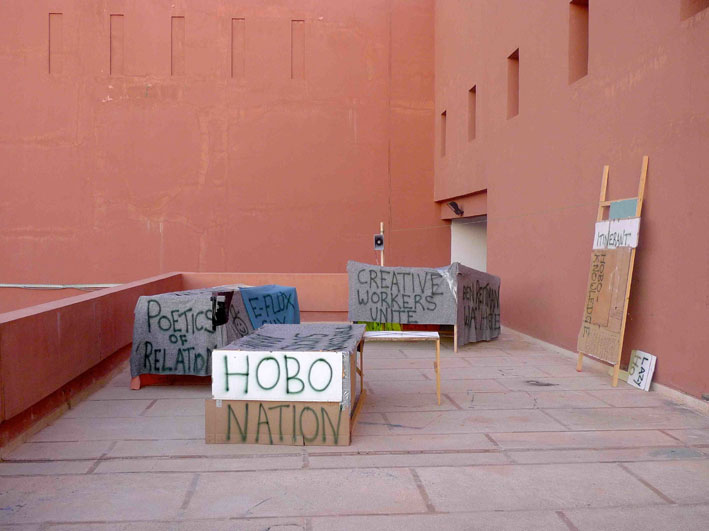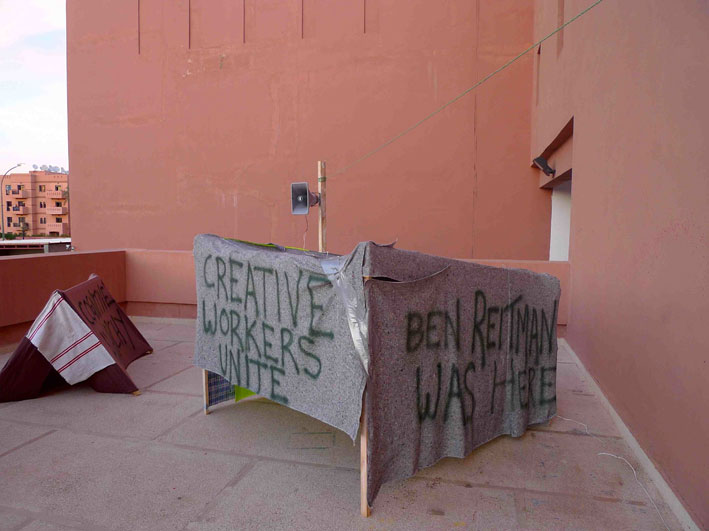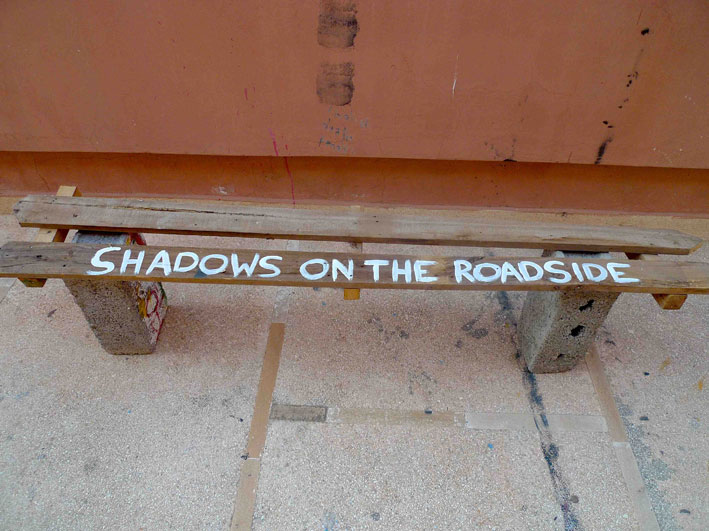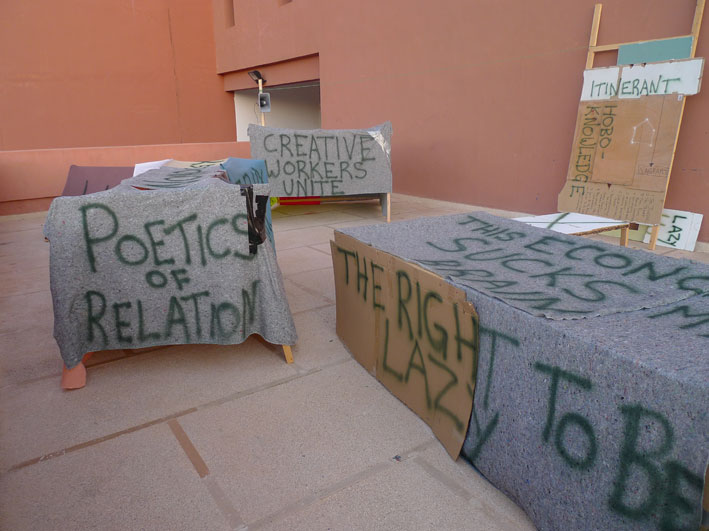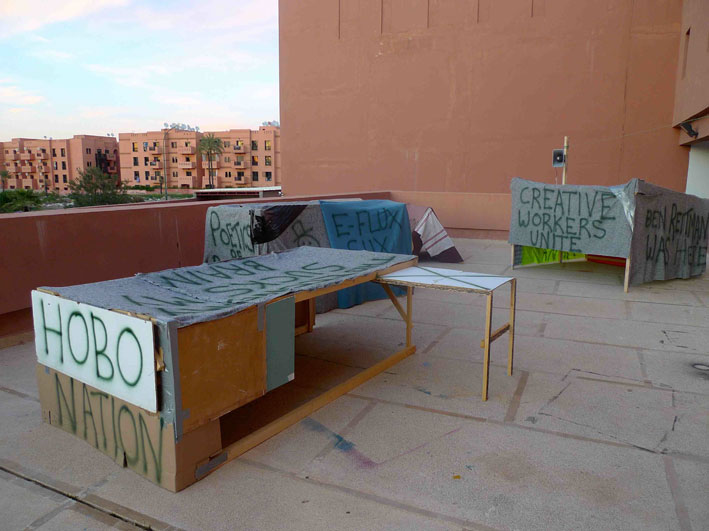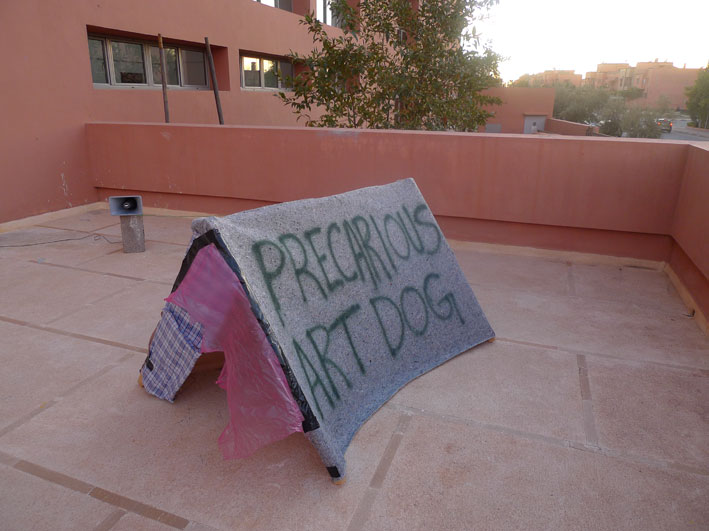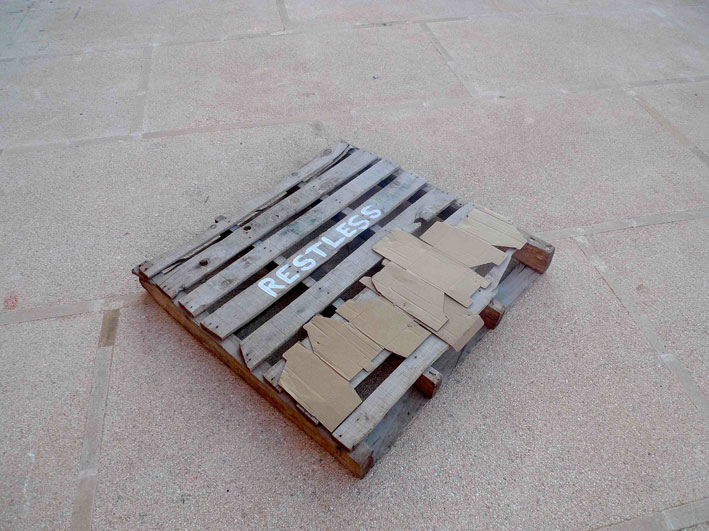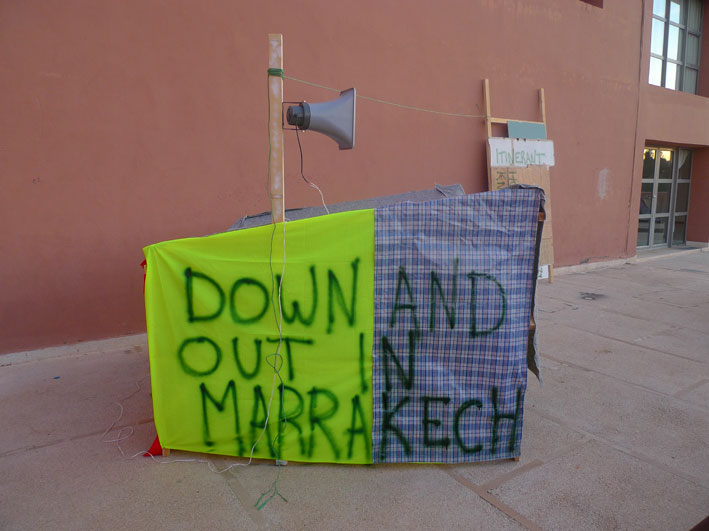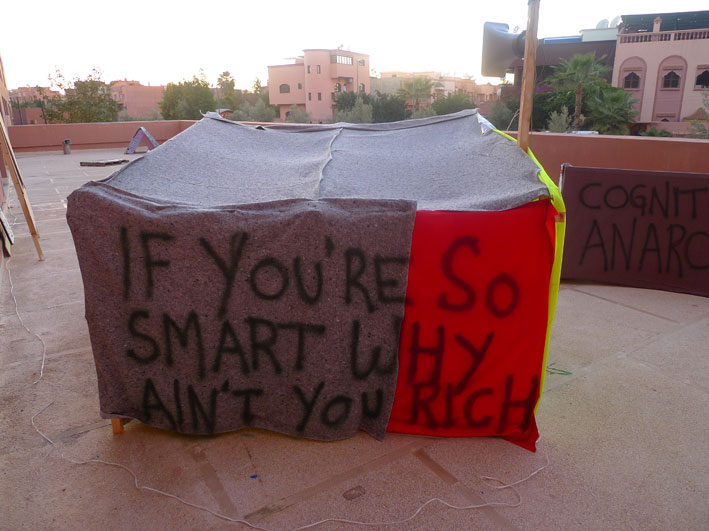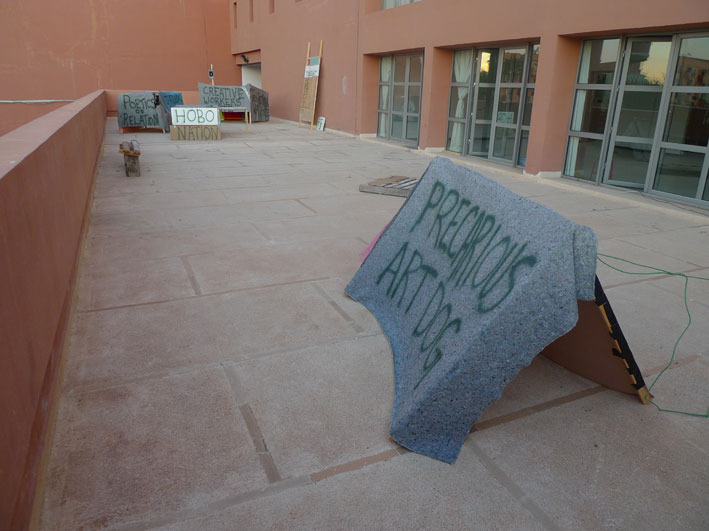Hobo College for Itinerant Studies
2014
The project takes the themes of migration, labor, creativity, exhaustion and travel, examining and amplifying them through the figure of the Hobo: the migrant worker who trailed across America in the early part of the 20th century, hopping on trains, sleeping outside of town, and in search of work. The Hobo is a complex embodiment of the modern laboring subject under the pressures of capital. As Nels Anderson stated in his early study from the 1920s, to deal with the Hobo “society must deal also with the economic forces which have formed his behavior.” Yet, Hobo culture was also a thriving wellspring of anarchist thought, social organization, and political protest, leading to expressions that sought to negotiate the demands of work with the spirit of the road – the Hobo is a figure in search of not simply work, but a mode of freedom.
The project follows the Hobo as an historical figure that has also walked into the present, tracing a line between these early traveling workers and the contemporary precariat – as that figure defined by the new spirit of capitalism. Drawing on the establishment of what was known as the Hobo College (Chicago, 1908), the installation appears as a makeshift camp: a series of improvised tent structures located outdoor at ESAV school of art and cinema. Integrated within the scene is an audio work capturing a confession of an overworked artist. The work is envisioned as an uncertain college dedicated to itinerant studies as well as itinerant knowledge. Here, the Hobo is a vehicle for imagining routes in and around cognitive capital, where stupidity and the unskilled, daydreams and fantasies of Big Rock Candy Mountain may capture a type of unease central to the precarious body.
Exhibited as part of “If you are so smart, why ain’t you rich”, parallel project, Marrakech Biennial, Morocco
February-March 2014
